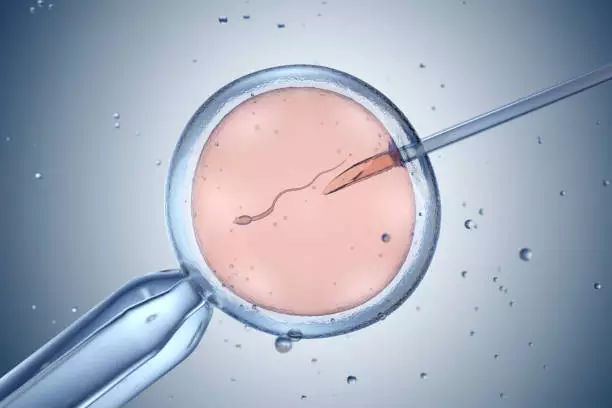In Vitro Fertilisation (IVF) is one of the most common medically assisted reproduction techniques used to help couples with infertility problems. It involves a complex but well-orchestrated process whereby oocytes are fertilised outside the body before being re-implanted in the uterus. Understanding each stage of this journey can be essential for those considering this option.
The aim of IVF
The main aim of IVF is to enable couples who have difficulty conceiving naturally to fulfil their dream of becoming parents. IVF is often recommended after several unsuccessful attempts with other, less invasive treatments, or when specific conditions prevent natural conception.
Why opt for IVF?
There are several reasons why a couple may decide to undergo IVF:
- Ovulation problems making it impossible to release a mature egg.
- Blockage of the fallopian tubes, preventing the passage of eggs.
- Male infertility due to low sperm quantity or quality.
- Genetic conditions that prevent conception or threaten the health of the unborn child.
The stages of ovarian stimulation in In Vitro Fertilisation (IVF)
Ovarian stimulation is the first major stage in IVF. It involves the administration of hormonal drugs to encourage the ovaries to produce several mature oocytes during a single menstrual cycle. This increases the chances of successful fertilisation and embryo development.
The role of hormone injections
Daily injections of hormones such as human chorionic gonadotropin (hCG) are commonly used to stimulate the ovarian follicles. This phase generally lasts between 10 and 14 days and requires regular checks by ultrasound and blood tests to monitor follicle growth and adjust the treatment if necessary.
Oocyte retrieval in In Vitro Fertilisation (IVF)
Oocyte retrieval, also known as follicular puncture, is carried out under light anaesthetic. It is a rapid, minimally invasive procedure in which a fine needle is inserted through the vaginal wall to reach the ovarian follicles and aspirate the mature oocytes.
Precautions to take
To optimise the chances of success, it is crucial to follow the doctor’s recommendations regarding preparation and post-operative care. Adequate hydration and rest are essential to promote rapid recovery and reduce the risk of complications.
Oocyte fertilisation
Once the oocytes have been recovered, they are immediately cultured in a special medium. The previously collected sperm is then added to allow fertilisation to take place. This process can be natural or assisted by a technique called ICSI (Intracytoplasmic Sperm Injection), used particularly in cases of severe male infertility.
Embryo development
After fertilisation, the embryos are monitored for several days in a carefully controlled environment. Embryo development is closely monitored, and only the best quality embryos are selected for uterine transfer.
Embryo transfer
Embryo transfer is a key stage in the IVF process. Generally carried out three to five days after fertilisation, it takes place when the embryos have reached the blastocyst stage. Transfer is a simple procedure in which the selected embryos are placed in the woman’s uterus via a fine catheter passed through the cervix.
Factors influencing the success of the transfer
Success depends on a number of factors, including the quality of the embryo, the health of the uterine lining and the medical protocols followed before and after the transfer. Additional treatments, such as progesterone, may be prescribed to encourage implantation.
Pregnancy test and monitoring in In Vitro Fertilisation (IVF)
Approximately two weeks after the embryos are transferred, a pregnancy test is carried out to determine whether the procedure has been successful. If the result is positive, regular consultations will be necessary to ensure that the pregnancy is developing properly.
Managing expectations and psychological support
As IVF is an emotionally challenging journey, placing significant emphasis on psychological support helps to manage anxiety and uncertainty. Whether it’s through support groups, specialist counsellors or close friends and family, receiving this support helps to build resilience throughout the process.
Advantages of IVF over other techniques
IVF has a number of advantages over other methods of assisted reproduction. Firstly, it offers couples a solution even in the face of major biological obstacles such as genetic problems or structural anomalies.
Comparison with intrauterine insemination (IUI)
IVF allows greater control over every stage, from ovarian stimulation to selection of the best embryos, unlike Intra-Uterine Insemination (IUI), where sperm is introduced directly into the uterus. IVF is therefore often preferred for complex cases of male or female infertility.
Concrete results
IVF success rates vary according to a number of criteria, but overall exceed those of other approaches. Numerous studies show that IVF can offer a more substantial chance of a successful pregnancy and lead to positive results where other treatments have failed.
Challenges associated with IVF
Despite its advantages, IVF also presents significant challenges. The high costs, physical implications such as the side effects of hormonal drugs, and emotional constraints are all factors that need to be seriously considered.
Potential solutions
To mitigate these challenges, there is insurance to partially cover the cost, as well as options to spread the payments. In addition, scientific advances continue to improve protocols to minimise physical discomfort and increase the likelihood of success.
Economic and social impact of In Vitro Fertilisation (IVF)
This treatment represents not only a personal financial investment but also has a wide economic impact. Remuneration policies for IVF treatments vary and greatly influence accessibility for various segments of the population.


